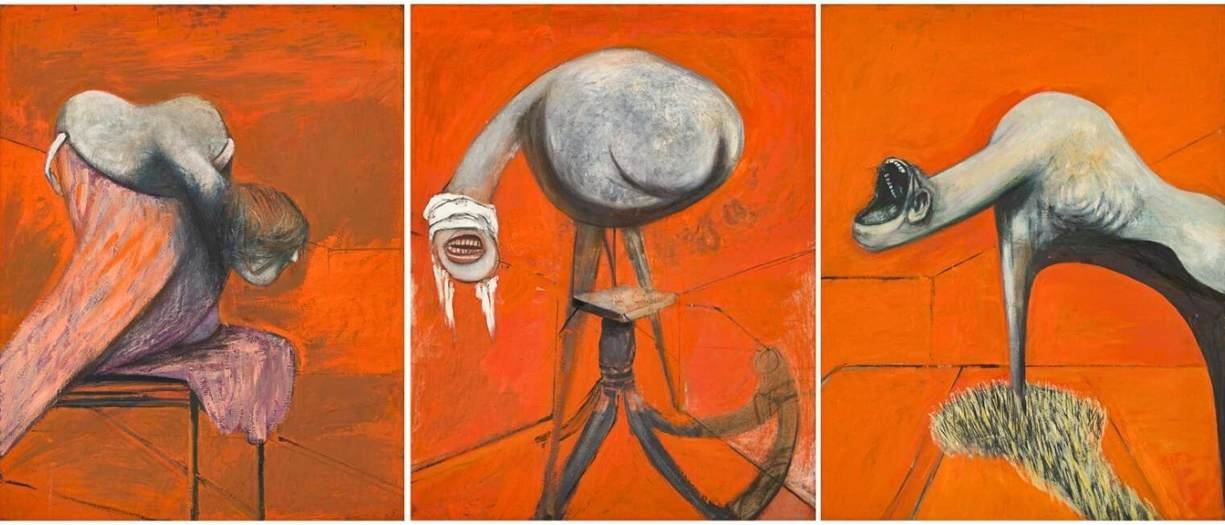London, Tate
This was Bacon’s first mature work. It was completed in 1944 shortly after the artist devoted himself to painting full time. Although an early work it is quintessential Bacon encapsulating the horror, pain and revulsion which are essential elements of his output. Of course the timing of its execution during the climax of the most destructive war in history must have been influential. The work was exhibited in London in 1945 and according to one critic it ‘caused total consternation’. One can imagine that this would not have been an exaggeration.
Each part of the triptych contains a bestial mass of amorphous flesh imprisoned in a nightmare space of livid orange. Each of these indeterminate creatures has a phallus-like neck; the central beast, its body reminiscent of something from the darker passages of a Bosch triptych, turns its neck towards the viewer, a grotesque mouth to the fore; some sort of cloth forms a blindfold but perhaps these creatures are without eyes. The being in the right wing of the triptych certainly seems to be blind but we cannot know for sure as its mouth is so extended in a silent howl that any eyes may be obscured. The creature in the left hand panel seems to be cowed into a state of enforced introspection, perched on a table, swathed in, or perhaps bound by, a clashing violet and orange cloth, head lowered in mute subjection.
According to the artist these images represent the Eumenides — the Furies of Greek drama; Bacon may have been influenced here by T. S. Eliot whose play The Family Reunion, in which the Eumenides play a part, was first performed in 1939. The use of the triptych is interesting — of course it has obvious connections with centuries of Christian imagery but the artist was not a believer and his use of this format, strongly linked as it is with the Crucifixion, is more to do with its place in the portrayal of human suffering.
Bacon’s long fascination with the depiction of the cry or the scream takes flight in this picture and continued in such iconic works as the Screaming Pope (to use the popular title). The roots of this fascination can be traced to an interest in photography and film, specifically to a still from the Eisentein film Battleship Potemkin showing the scream of a woman who has just been shot on the Odessa Steps, and to later Surrealist photographs and writings and even to clinical books on oral disease.
The list of sources is wide ranging but Bacon draws from them a very personal and intensely shocking vision of human frailty and suffering.
Contemporary Works
1943 Piet Mondrian: Broadway Boogie-Woogie, New York, MOMA
1945 René Magritte: The Rape, Paris, Musée National d’Art Moderne – Centre Georges Pompidou
1946 Pablo Picasso: La Joie de Vivre, Antibes, Museum Grimaldi
Categories:
- British Twentieth Century Painting
- Expressionism

